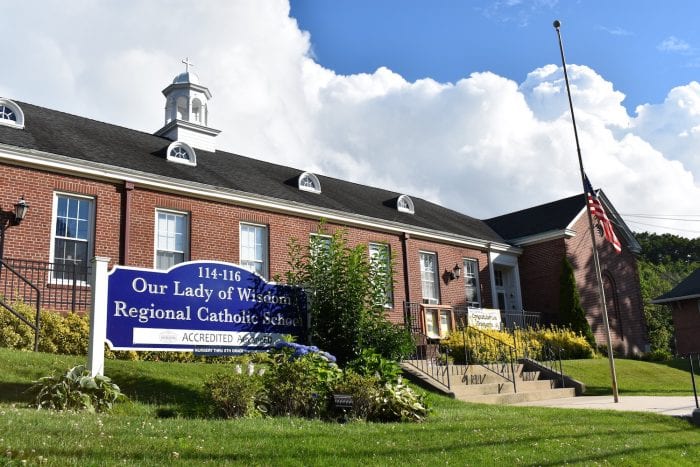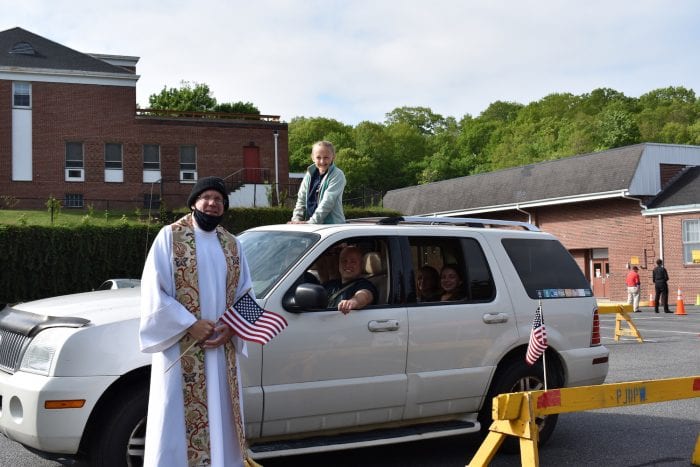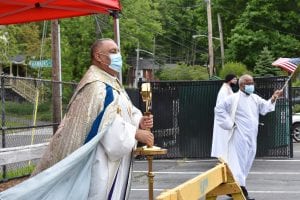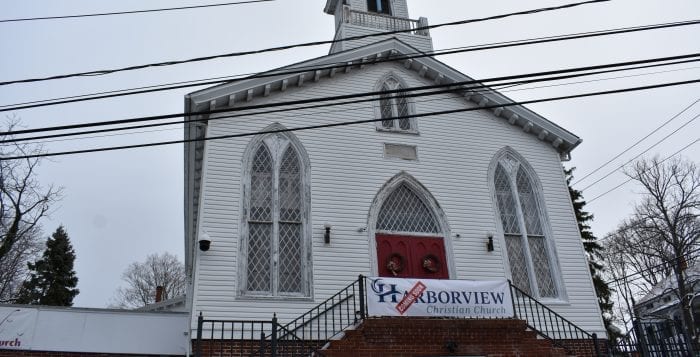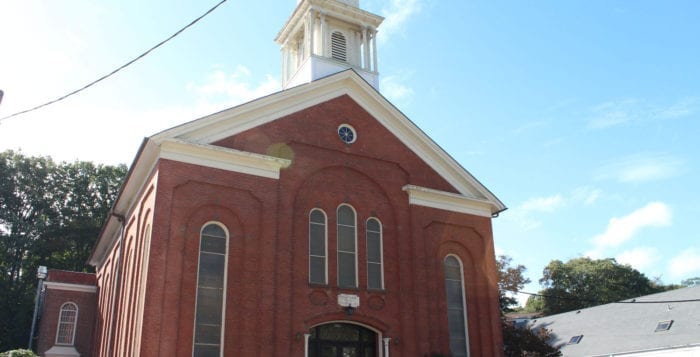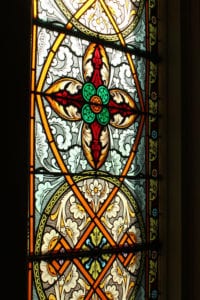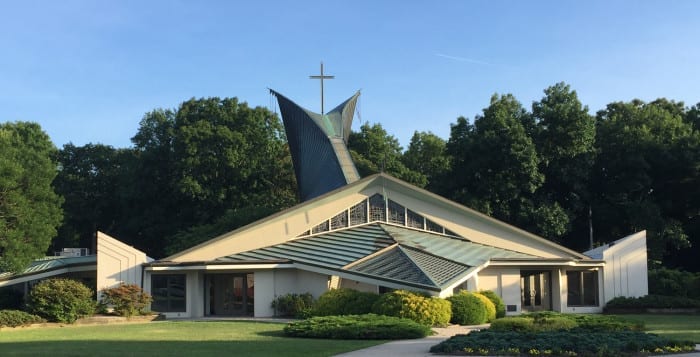Our Lady of Wisdom Regional School in Port Jefferson will have closed by the end of the school year and will not reopen for fall2020. The coronavirus pandemic has hurt the institution, and Catholic officials said COVID-19 has exacerbated issues of progressively lagging enrollment.
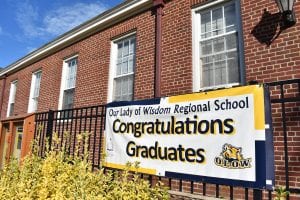
According to a release by the Diocese of Rockville Centre, the school, located on the grounds of the Infant Jesus R.C. Church in Port Jeff, along with two other Catholic schools on Long Island, have suffered from increased competition from public and other secular schools. This has led to more and more financial support needed from local parishes.
“Following much analysis and discussion with stakeholders at both the diocesan and parish levels, the pastors of the parishes that support each school have made the difficult decision to close,” the diocese states in the release.
Parents will need to work with the diocese’s Department of Education and other school officials to enroll their kids in different Catholic schools on Long Island.
“COVID-19 has had a significant financial impact on all of the parishes and schools within the diocese, resulting in the difficult decision to close these three Catholic elementary schools in order to eliminate the unsustainable financial stress on their parishes,” said Sean Dolan, a diocese spokesperson.
The diocese said in the release the school has declined in enrollment by 37 percent to just 66 students in kindergarten through eighthgrade. It is 31 percent, or 79 students, if you consider students from nursery through eighth-grade.
The school was financially supported by four local parishes, including Infant Jesus, St. Gerard Majella in Port Jefferson Station, St. James R.C. Church in Setauket and the St. Louis de Montfort in Sound Beach. The diocese said the four supporting parishes provide around $475,000 in operating support to the school, which accounts for more than 45 percent of the school’s total revenues.
Our Lady of Wisdom Principal John Piropato and other school leaders did not return requests for comment.
The school was established by the Daughters of Wisdom, an order that has deep ties to Long Island, in 1938, then called the Infant Jesus Parish School. It was renamed to Our Lady of Wisdom in 1991. The sisterhood was largely uninvolved with it once it became a regional school, according to Sr. Cathy Sheehan of the Daughters of Wisdom.
Remembering Infant Jesus School
For the many students who went there over the past 80 years, many remember it as a strict place of learning, whether that fostered a sense of discipline or a harsh atmosphere. Once it transformed into a regional school, many said the place fostered a unique sense of community one couldn’t get from the other expanding school districts on Long Island.
Displants from the Port Jefferson/PJS area, folks who live as far away as New Mexico, chimed in remembering their old school.
Eileen Powers-Benedict said going to the Infant Jesus School engendered a strong sense of order that helped them get ahead in their school careers. The oldest of nine children, five brothers and three sisters, she would enter the school in 1961 while the last of the Powers children would graduate in 1985. Her father, William Powers, a deacon, was a frequent clergy visitor. Her mother, Tatty Powers, was a volunteer who did readings to those in prekindergarten through first grade. Powers-Benedict’s three children also went through the school.
She said while she understands why the school had to close, she is disappointed other parents will never have the choice to send their children there.
“The education for my siblings and me was all business, some of us came out a year ahead in foreign language and mathematics, although individualized instruction was not in style,” she said. “There was a tremendous air of compassion that supported students and their families in times of trouble and strife.”
Michael Langan, who now lives in Ridgefield, Connecticut, was one of six children of World War II veterans Robert and Elizabeth Langan. He would graduate from the Infant Jesus School in 1968.
He remembers even before the convent went up next to Infant Jesus church in the late ‘60s, when the nuns lived at a convent at St. Charles Hospital. The nuns would walk to the school or have a station wagon take them in bad weather.
Many of the nuns who taught at the school when he was there, Langan said, originated from Ontario, Canada. Many had marked French accents. Back then, he said behavioral discipline was very much the norm, including some amount of corporal punishment.
“But in fact that was true of public and parochial schools back in the ’50s and ’60s,” he said,
Back then, he remembers, class sizes were much larger than today, with around 50 students.
One particular nun, Sr. Mary, he said, had “a beautiful soul — emblematic of the dedication of the Daughters of Wisdom who served the people of the Port Jefferson area for so many years.” She passed away this year on April 8.
Not everyone accepted the nun’s punishment lightly. Deborah Keating, who now lives in Florida, said she graduated eighth-grade from the school in ’69, describing it as “a nightmare,” saying that some nuns could be abusive.
“Sr. Ann Michael, if you saw her coming, you knew you had better pray for your life,” Keating said.
Though at the same time, her brother, who she said had Down syndrome, attended the Maryhaven facility in Port Jeff, which is also run by the Catholic church. There, she said the staff was very kind to him, and he went on to work as a janitor in the Maryhaven facility, He has since retired after working there 25 years, and lives with Keating at her home in Florida.
Things did change, especially as the years went by and the school changed names and leadership. MaryKate Henry, who lives in Babylon village, grew up in a middle-class household in Coram that she said worked hard to provide the Our Lady of Wisdom tuition for her and her siblings. She went there as it transformed into a regional school, and graduated eighth-grade in 2000 with a class of just 19. Her largest class size was in fourth=grade with 36 kids taught by one teacher. To this day, she still has friends that went there in her elementary years.
“That’s what I loved about OLOW — as we called it — everybody knew everybody, who your parents were and what they did and everyone was there for each other,” she said.
Faith was very much a part of the Catholic school, and she said that sense of religiousness has carried over into today. Her kids now attend the Babylon school district, and with a relatively small class size, she said it’s one of the things she hopes to have for her kids, a place that fosters community.

